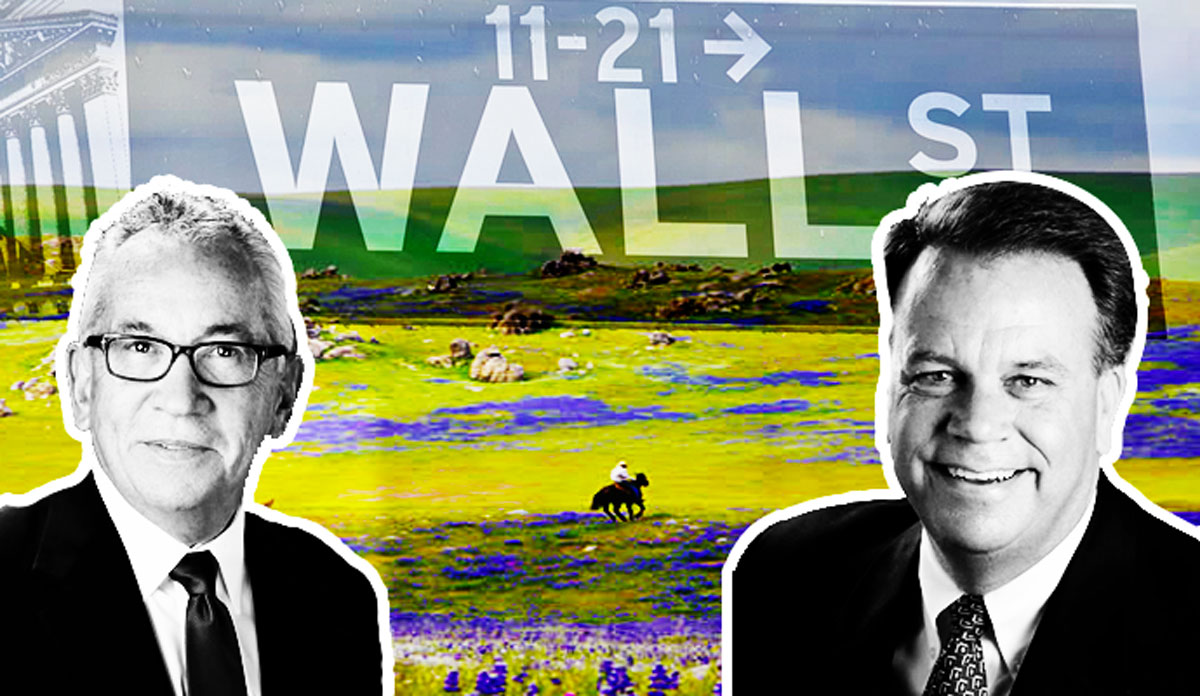Trending
Who is Tejon Ranch? A NY-backed firm plots massive communities in California

Just off the Interstate 5 north of Los Angeles, a vast swath of California named after a dead badger boasts thousands of acres of orchards and vineyards set among rolling hills and land suitable for grazing cattle.
If one developer, backed by institutional Wall Street money and a scion of the billionaire Tisch family, has its way, massive chunks of the undeveloped land will be replaced with housing, offices and the makings of a new city.
Pending approvals, Tejon Ranch, a small publicly traded company, will have won entitlements for nearly 35,000 residential housing units and more than 35 million square feet of commercial and industrial space spread out over four different projects.
The developments would shape an otherwise untouched pocket of California. The developer’s two-decade struggle to bring them to life has come to symbolize the tension over alleviating L.A.’s housing shortage versus creating new urban sprawl.
Until recently, despite owning one of the largest continuous swaths of private land in the country, Tejon Ranch has flown largely under the radar. Now with its signature project — Centennial — the firm is drawing attention. In the next several months, the L.A. County Board of Supervisors is expected to take a final vote on the fate of the sprawling planned community, some 60 miles northwest of L.A. County.
From Agribusiness to Wall Street
With its roots in agribusiness, Tejon evolved from a locally controlled property holder with ties to the Mexican-American War and the Chandler family, to a Wall Street-backed developer with a market cap of about $500 million. Today its partners include multi-state developers like TRI Pointe Group and Lennar Corp.
TowerView LLC, an investment firm led by Daniel Tisch, a son of the late Loews Corp. co-founder Larry Tisch, is the largest investor. He controls roughly 14 percent of the firm’s outstanding stock valued at about $90 million, according to a Securities and Exchange Commission filing. Tisch also sits on the Board of Directors.
The Loews Corp., led by his brother James Tisch, owns the luxe hotel chain Loews Hotels, and has a market cap of $14 billion. The presence of the powerful family is felt everywhere in New York, from the Tisch School of the Arts to the Tisch Hospital.
Daniel Tisch is also an independent trustee and investor of Vornado Realty Trust, the New York-based firm that invests in office and retail properties.
Roughly three-quarters of Tejon’s stock is held by institutions, filings show. The Vanguard Group, Third Avenue Management, Royce & Associates and Blackrock hold the most shares, respectively.
It wasn’t until two decades ago that Tejon made a push towards real estate development. While real estate development always loomed as a possible course, the company’s primary interests were oil, farming and agriculture.
Tejon’s “business interests have really evolved,” said Barry Zoeller, the firm’s vice president of corporate communications and investor relations.
The company’s history dates to the 1850s, when Gen. Edward Fitzgerald Beale arrived on the land after the Mexican-American War. As California’s first Superintendent of Indian Affairs, Beale established Fort Tejon, a military outpost meant to control and supervise the Indian tribes on the land. The story goes that a Mexican army officer named the region El Tejon — Spanish for badger — after his soldiers found a dead badger at the mouth of the canyon, according to Tejon.
By 1866, Beale had spent $90,000 to assemble 270,000 acres — roughly eight times the size of San Francisco — through Mexican land grants. That’s the equivalent to $1.4 million in today’s dollars.
The ranch passed down in the Beale family until 1912, when a group of businessmen led by Harry Chandler, the newspaper and real estate tycoon, bought the property. Chandler, who was a longtime publisher of the Los Angeles Times, at one point was also the largest private landholder in the U.S.
Tejon officially went public in 1936, trading over the counter. Chandler was involved until 1997, when he and his partners sold their 31 percent stake to two New York investments funds, Third Avenue Trust and Carl Marks Management Co., paving the way for what would soon shape the firm’s underlying mission.
In the 1990s, the institutional holders ultimately pushed Tejon Ranch executives to explore other forms of revenue, including real estate, Zoeller said.
By 1999, Tejon was trading on New York Stock Exchange, and had begun plotting new cities in between Kern and L.A. counties.
Today, while much of the investment flows from New York, most of the company’s 130 employees are based in Lebec, an unincorporated area in the Central Valley near the Ranch.
Centennial
Centennial, the firm’s crown jewel, is the final project awaiting approvals. Its three other projects are in varying stages of development, Zoeller said.
The firm is nearing a groundbreaking on Tejon Mountain Village, a 5,000-acre gated resort community on the Ranch. It is still litigating lawsuits against Grapevine, another master-planned community that stretches 8,000 acres. Its first large commercial development — the Tejon Ranch Commerce Center — is already in operation.
“Centennial was probably the first one we started working on in earnest,” Zoeller said. It’s also the one that has taken the longest.”
With Centennial, Tejon is hoping to build a 12,000-acre project that would create nearly 20,000 new homes and 10 million square feet of commercial space.
A single-family house would cost anywhere between $425,000 to $550,000, the Los Angeles Times previously reported. Zoeller said that range is subject to change given that it will be several years before housing is built.
“Most will be geared toward the middle-class buyer,” he said.
Greg Madeiros, vice president of community development, said the firm is still debating whether to include units for homeless housing in the project, as some Regional Planning commissioners recommended in the last County hearing. Tejon is also setting aside 15 percent of the housing units as affordable.
Like many large-scale developments, the project has been bogged down by preservationists and lengthy bureaucratic processes.
Opponents of the project argue the development would destroy key natural wildlife and create unnecessary urban sprawl that would only worsen the environment. At public hearings, critics have called the project “leapfrog urban sprawl.”
While many conservationists would like to see the Board of Supervisors reject the project, other multifamily developers are confident that by the next decade, Centennial will be more than a controversial pipe dream.
“The people there know what they are doing,” said Randy Johnson, executive vice president at Brookfield Residential. “They have been doing this for quite a while. If they say they’re going to do something, they do.”




